How to build a campfire on the beach
There are some unique hazards to having beach fires that you should know about before gathering that kindling
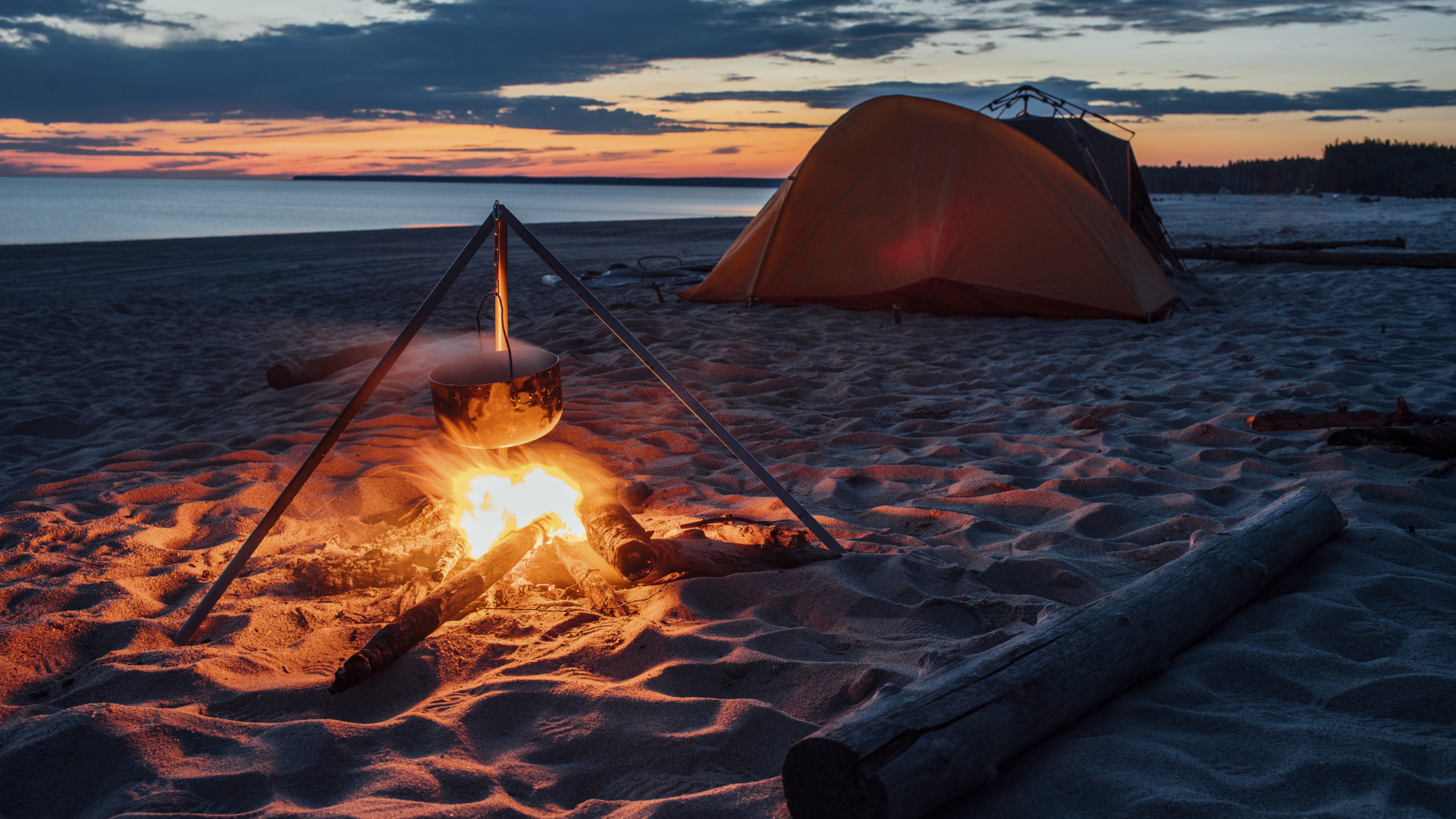
Whether you’re pitching your tent on one of California’s stunning beaches or along the shore of a Scottish loch, there are few things better than throwing your favorite camping blanket over your shoulders and sharings stories and songs around the campfire. But building a campfire on the beach is a little different from lighting up in the fire pit at a regular campsite.
Because you’re not surrounded by grass and leaves the way you might be in a forest, it’s easy to assume that a beach campfire will be a really safe option, but there are some unique hazards to having beach fires that you should know about before gathering that kindling. There are also elements to having a campfire at the beach, such as high winds and high tides, that can make it all a little more tricky.
Before you even think about lighting up at the beach, you’ll naturally want to check ahead and make sure that you’re allowed to have a fire. There are lots of great places where you probably want to camp where campfires are allowed, such as South Beach Campground in Olympic National Park and most California and Scottish beaches, whereas you’ll find more restrictions on North Carolina’s beaches and may need landowner permission if you're wild camping in England and Wales.
Once you’ve ensured that it’s ok to spark up, grab a camping bucket and follow these helpful hints for a successful and safe blaze at the beach.
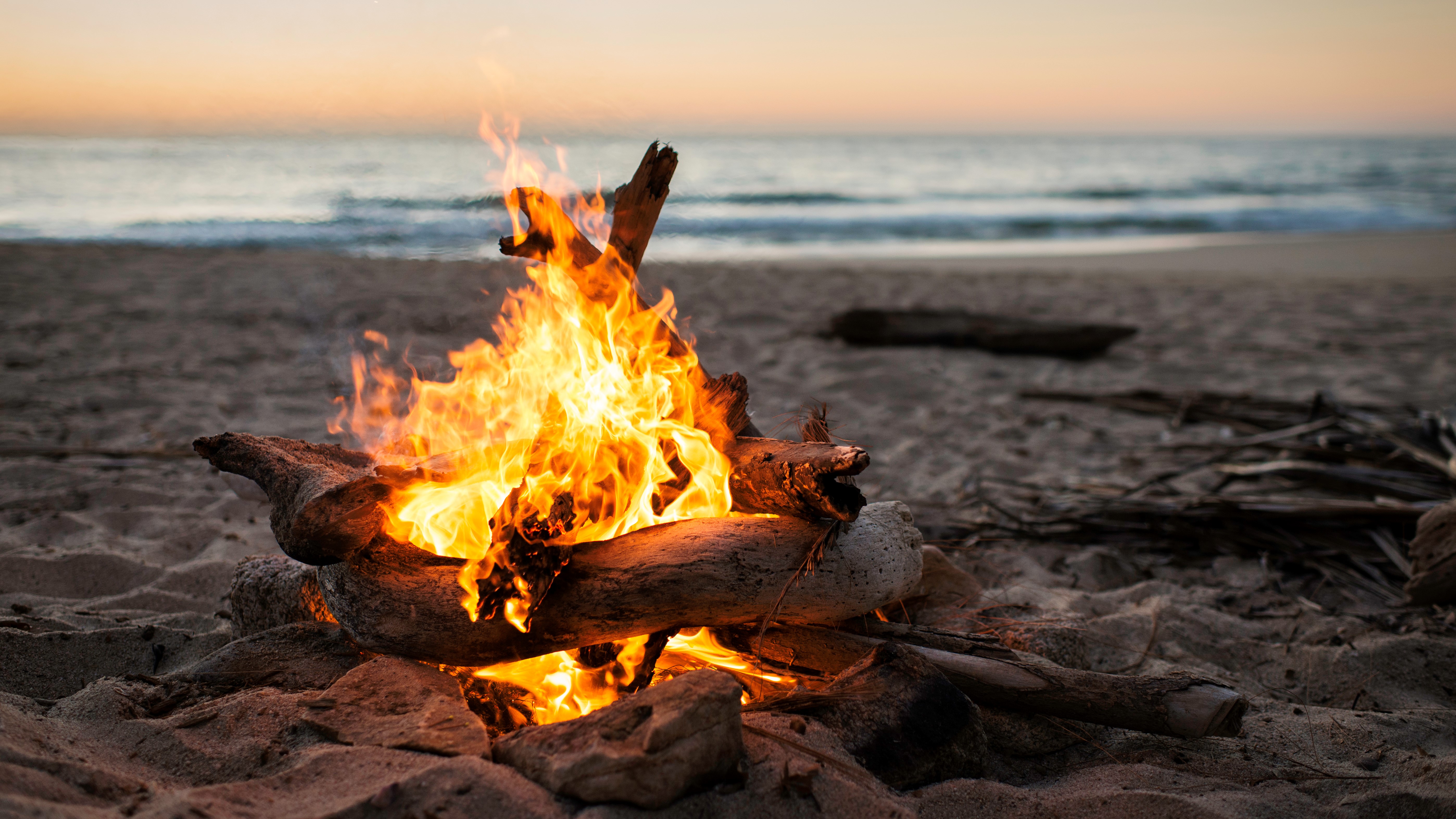
1. Pick your spot
If you’re camping at a beach with existing fire pits, please use those for your campfire.
If, however, you’re wild camping at a wide open beach, it can be easy to think that you can start a fire just anywhere, but hold on a moment. If it’s a tidal inlet and the tide is out, look for that tell tale line of driftwood, seaweed and other debris that shows you where the water comes up to, and build your campfire above that line to avoid it getting washed away.
You should also steer well clear of grassy areas and sand dunes, which host countless plants and animals that would prefer not to have their homes incinerated, thank you very much.
All the latest inspiration, tips and guides to help you plan your next Advnture!
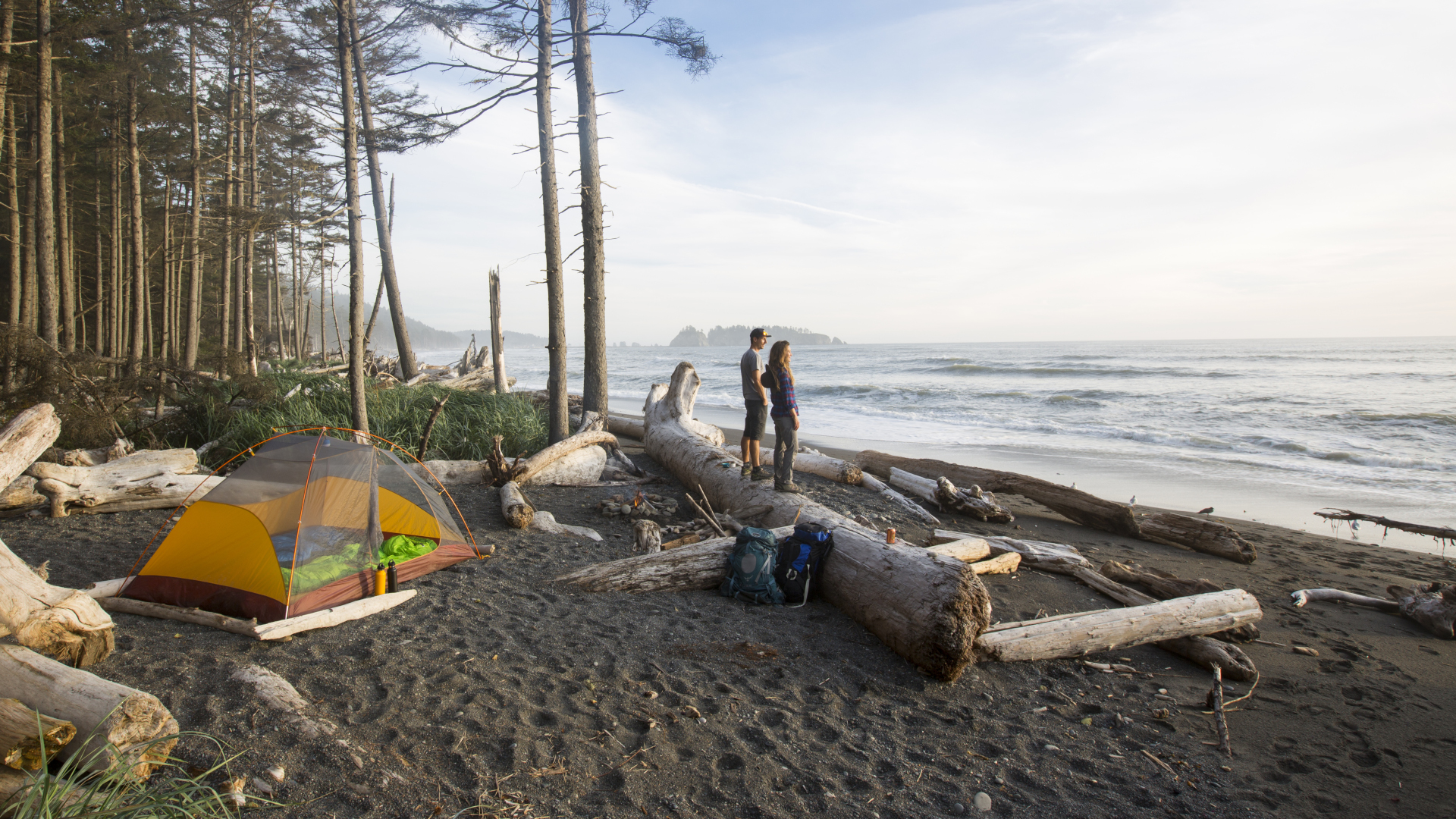
2. Build your pit
Assuming there aren’t pre-existing fire pits available, you’ll need to build your own. If you’re at the seaside, you’ll nearly always have gusty winds to contend with, so it’s advised to dig a pit to give yourself a natural breeze block. Using a shovel, dig a pit about a foot deep and three feet in diameter for starters (if it’s very windy, you may need to go deeper).
If you have a camping tarp that you brought along for a wind block, you can also set it up while you build your fire.
If there are rocks available, you can use them to form a ring around your fire and add a little protection from wind and jumping embers, although please remember to return them to where you found them the following day in order to leave no trace.
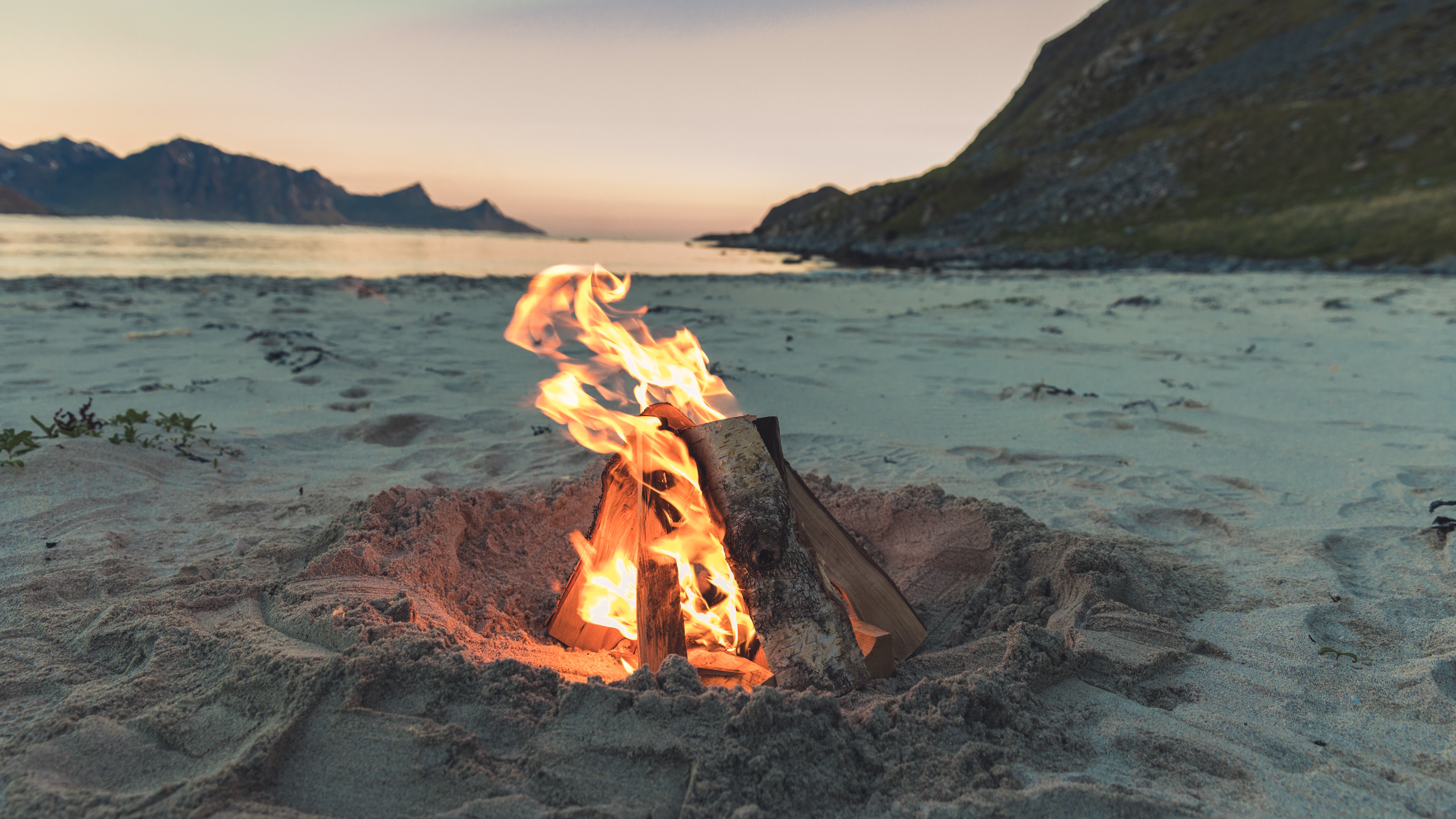
3. Gather wood
Naturally, you’ll need wood for a fire so hopefully you’ve thought ahead and researched the area where you’ll be camping – dry driftwood makes ideal kindling, while a beach next to a forest is a great place to gather firewood, though you may need to bring a camping axe and chop your own. If you know there aren’t any trees nearby and you aren’t sure about the availability of driftwood, it’s best to bring your own firewood with you.
4. Build your campfire
You’re ready to build your fire. There are a few methods of crafting a campfire which we describe in our article on how to build a campfire. If it is windy, you’ll probably want to try the Lean To method:
- Place a large log in your fire ring – this should ideally measure 6-8 inches tall.
- Spread your tinder out on the downwind (sheltered) side of the log, so that the log forms a windbreak.
- Cover the nest of tinder with small scraps of kindling.
- Lean larger pieces of kindling against the log to create a roof for the tinder and smaller pieces of kindling.
- Light your tinder and add progressively larger logs or branches.
Once you get your fire going, don’t leave it unattended. Pull up your best camping chair, pour yourself a drink and enjoy that warm glow.
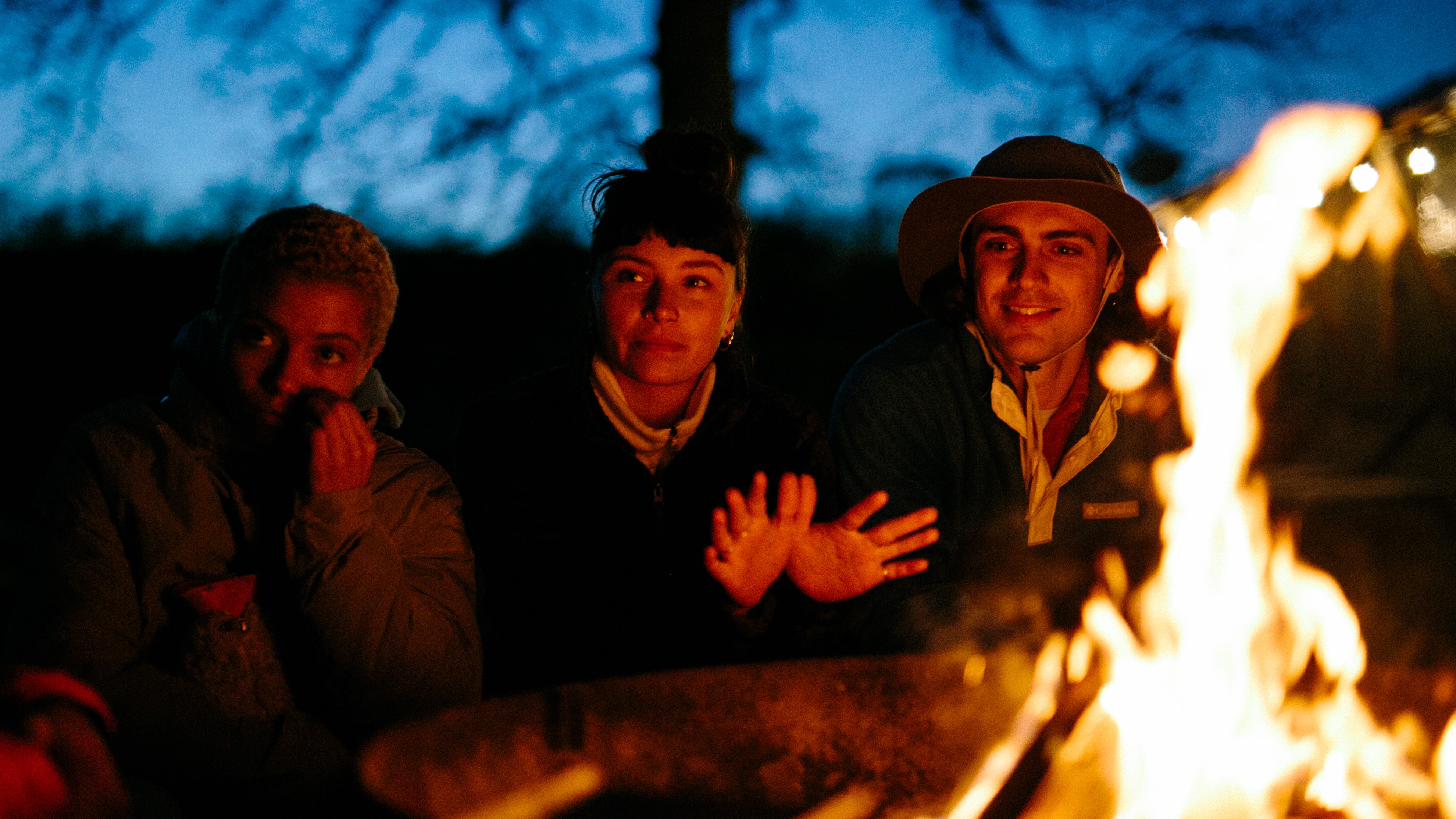
5. Extinguish your fire responsibly
Because beaches are often free of grass and sand isn’t flammable, it’s easy to think that you can just head off to your family tent when you get drowsy and let the fire dwindle on its own – don’t make this mistake. It’s really important to extinguish your fire properly. A common technique is to bury it in sand, which will douse the flames, but can also mean unsuspecting walkers, campers and dogs end up walking barefoot over hot coals the next day as the surrounding sand gets poker hot, so please don’t do this.
Beaches skirt bodies of water, so use a bucket to douse the flames with sea or lake water before you go to bed. Use a stick to stir up the sand and ashes, then add more water. Repeat this process several times until you can comfortably touch the sand with your bare hand. Then you know it’s safe to leave unattended while you sleep.
Julia Clarke is a staff writer for Advnture.com and the author of the book Restorative Yoga for Beginners. She loves to explore mountains on foot, bike, skis and belay and then recover on the the yoga mat. Julia graduated with a degree in journalism in 2004 and spent eight years working as a radio presenter in Kansas City, Vermont, Boston and New York City before discovering the joys of the Rocky Mountains. She then detoured west to Colorado and enjoyed 11 years teaching yoga in Vail before returning to her hometown of Glasgow, Scotland in 2020 to focus on family and writing.

